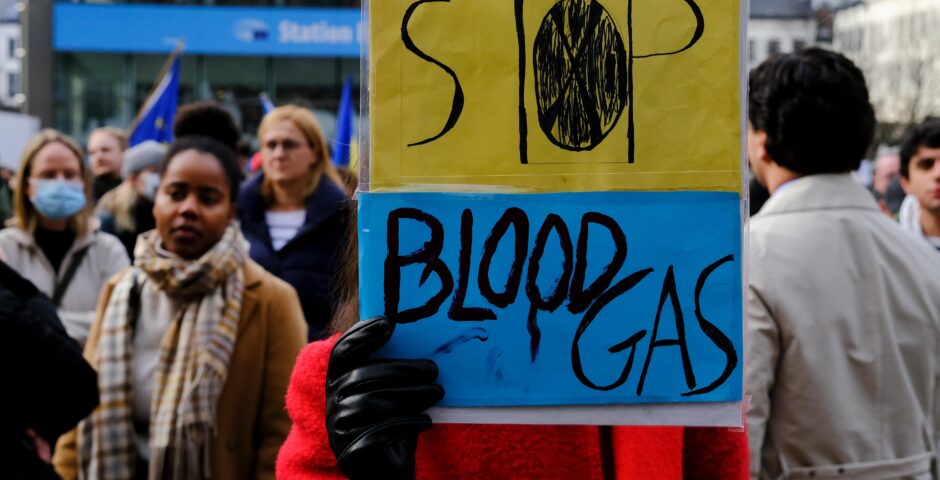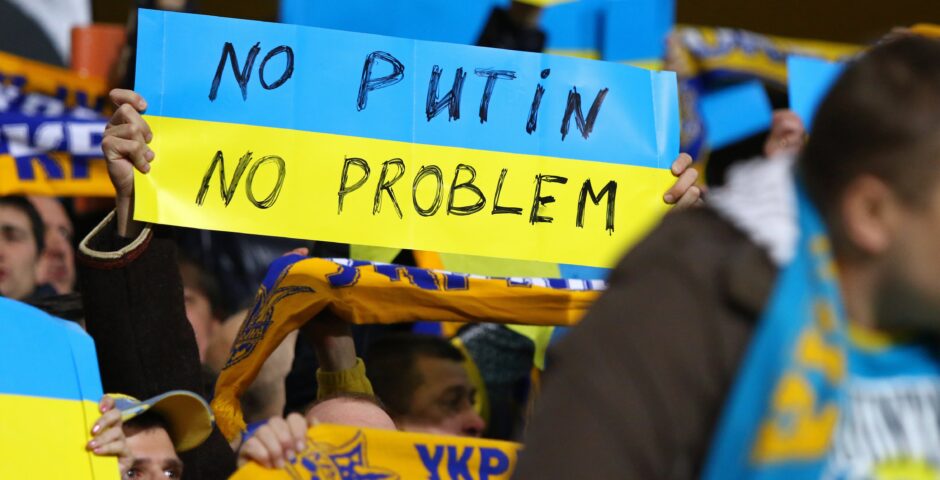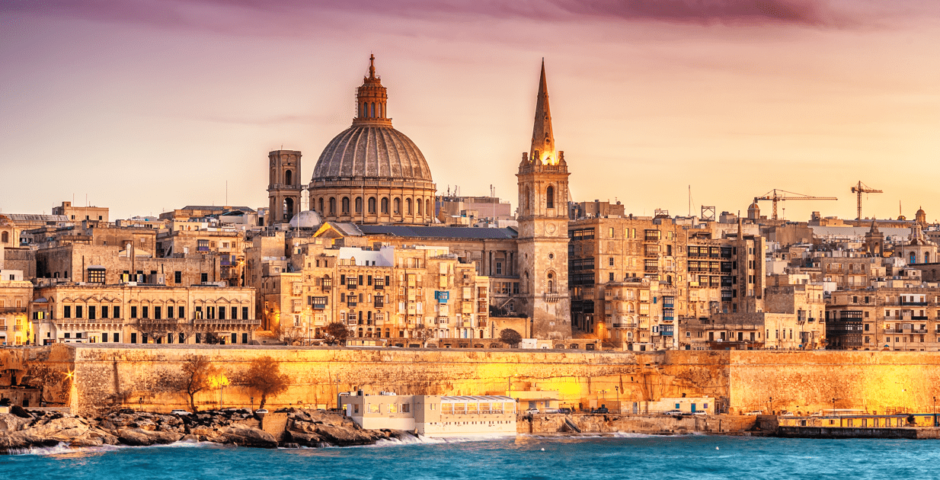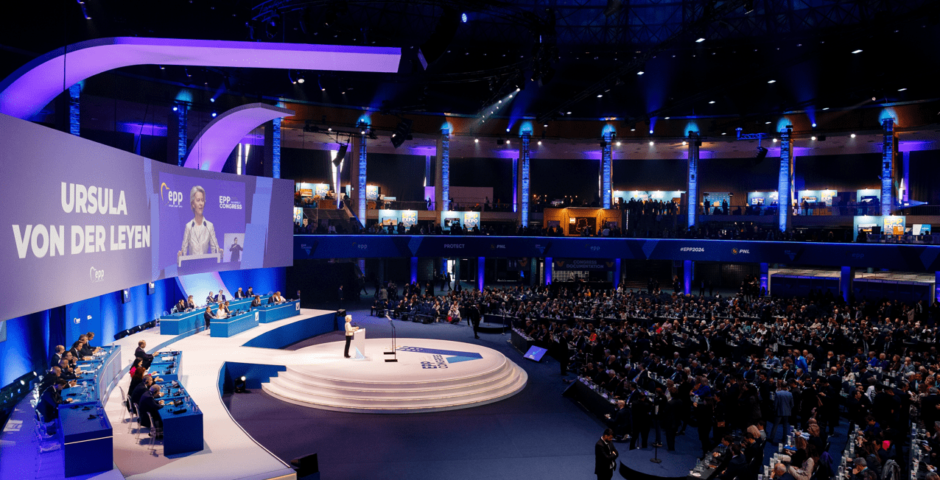Can the EU use Russian gas as a strategic tool?

How the Russian gas trade can be used to exert political pressure.
“Russia can only afford to fight because of its oil and gas. Russia’s main weapon against Europe is its threat to cut off oil and gas. So it might be wise to stop using oil and gas now that we have workable alternatives. (Also saves the planet).”
This is what Bill McKibben, well-known environmentalist, tweeted on 23 February. One day before Russia invaded Ukraine and turned up the heat in the ongoing and hitherto relatively ‘cold’ Russian-Ukrainian War.Relatively ‘cold’ since there has been a lot of unrest in the Donbas region in Eastern Ukraine since 2014. You may have already read more about this in an article about the Russian-Ukrainian War on this website in the spring of 2021, but it is an understatement to say that a lot has changed since then.
Recently, several articles have appeared on the Shaping Europe website about the current conflict situation in Ukraine from different angles. However, one of the topics that has been talked about a lot since Russia has been actively provoking the border – so even before the invasion in February 2022 – is the gas trade. In particular, the rising prices of gas in Europe, among other places. This is detrimental, especially for the countries that are largely dependent on Russian gas, but is it only to the disadvantage of the countries that buy the gas? As the question suggests, the answer is no. This article will therefore focus on the Russian gas trade and how it can be used as a weapon in the fight against Russia.
Gazprom
Talking about Russian gas means talking about Gazprom. But what kind of company is Gazprom exactly? Strictly speaking, it all began in 1989, during the time of the Soviet Union. Mikhail Gorbachev, then Secretary General of the Communist Party of the Soviet Union, decided in that year to merge the ministries of oil and gas, creating Gazprom as the first state enterprise of the Soviet Union. Gazprom itself uses the year 1993 as its founding date, when the company was privatized. Whereas the Russian state held only 40% of the shares in Gazprom in 1993, according to the latest figures from 2020, this has now risen to 50.23%. Gazprom has an export monopoly in Russia and contributed 3.2% of Russia’s gross domestic product in 2020. However, this export monopoly has recently come under pressure, more on that later in this article.
Apart from its contribution to the Russian economy, Gazprom is also an important political tool for president Vladimir Putin. Where under former president Boris Yeltsin Gazprom was mainly run by oligarchs, under Putin this changed dramatically through the introduction of a new company board loyal to him. Two important names in the new leadership are Aleksey Miller and Dmitry Medvedev. Both are what we call cronies of Putin, confidants. Miller is a friend of Putin’s from the time when both worked for the city of Saint Petersburg, before Putin made a career in national politics. Dmitry Medvedev also worked for Putin in Saint Petersburg, and later as deputy prime minister. He was even appointed by Putin as his successor for the presidency in 2007. Whereas Medvedev has not been closely involved with Gazprom since his presidency, Miller still is the company’s CEO. Because of Putin’s ties to Gazprom CEO’s, the Russian president is able to exert enormous control over the country’s financial sector via Gazprom.
European dependence
You have probably noticed that rising gas prices have been a topic of concern for months. While this was initially due to Russia’s refusal to supply more gas until long-term gas supply contracts were signed, it is now mainly due to Russia’s attack on Ukraine. Yet despite the ongoing war, Russia continues to supply gas to European customers via a pipeline that runs through Ukraine. So why the high prices? This is mainly due to the unrest that the war has sparked among energy suppliers. There is a great fear that not only the supply of gas via Ukraine will be stopped but that the supply via other pipelines that can transport Russian gas to Europe may be blocked through sanctions As a result, on Monday 7 March a new record high of 265 euros per megawatt hour was set for the price of gas. In perspective: exactly one year ago, the price of gas was only just over 16 euros per megawatt hour.
An exorbitant price increase, therefore, and this while the countries within the European Union purchase an enormous amount of gas from Russia. In 2021 the EU imported 155 billion cubic metres of gas from Russia. This is no less than 45% of the EU’s gas imports. This amounts to Russian gas accounting for 40% of the EU’s annual consumption. It makes Russia the largest supplier of gas to the European Union, followed by Norway, Algeria and Qatar. How dependent a country is on Russian gas varies from country to country. While Western European member states are around 25 to 50 percent dependent on Russian gas, some Eastern European member states are around 75 to even 100 percent dependent on gas from Russia.
Outside the EU, too, some European countries largely rely on Russian gas. Last year, this became painfully clear for Moldova. The deadlock of negotiations with Gazprom for a new gas contract threatened enormous gas shortages and even led to a state of emergency in the country. Gazprom was only prepared to enter into a contract for a gas price that was double that agreed in the previous contract. In addition, Moldova would still have to pay off a debt of 709 million dollars to Gazprom. At the end of October, a new five-year contract was signed, including a payment plan for the outstanding debt.
The other side of the medal
The rising gas prices and the figures that show how enormously dependent Europe is on Russian gas clearly illustrate what kind of power Russia has in the energy world. While we are only talking about gas, oil exports from Russia are also very important for the European continent. However, this position of power does come with significant risks. While Europe and the rest of the world may be largely dependent on Russian gas, Russia in turn, is also largely dependent on the purchase of gas by Europe. It was mentioned earlier that in 2020, Russia’s state-owned Gazprom contributed 3.2% of Russia’s gross domestic product. The total export of gas and oil together contributes no less than 50% to the Russian state budget.
And then there is Nord Stream 2, an infamous pipeline between Russia and Germany. In September 2015, Gazprom and five European energy suppliers signed a declaration to build two gas pipelines in the Baltic Sea, calling it Nord Stream 2. The pipelines would double the annual transport capacity of gas to the EU. In September 2021, Gazprom reported that the pipeline was finished, but to date it has not been put into operation. Initially this was because the regulators in Berlin and Brussels needed time over the winter to check whether the pipeline could be commissioned according to European legislation, but now the reason is of a different nature. Last month, even before Russia launched its attack on Ukraine, the German government decided to suspend the approval process.
Gas trade as a weapon
The dependence is felt on both sides. For Europe, it is the supply of gas, but Russia benefits just as much from supplying hydrocarbons to the continent. Halting the certification process for the Nord Stream 2 pipeline is therefore seen as the first major step in thwarting Russia’s aggression against Ukraine. In the meantime, after the outbreak of an active war, the European Union has been busy imposing more sanctions on Russia, including on energy. On 15 March, for example, the European Union presented a new package of sanctions. One of the points within that package is the prohibition of new investments in the Russian energy sector and a comprehensive export restriction on equipment, technology and services in destined for the Russian energy sector.
A complete EU-wide ban on gas imports from Russia seems impossible for now, so the main point of action at the moment is to reduce Europe’s dependence on Russian gas and also oil. On 11 March, the EU announced that the deadline for ending this dependence has been set at 2027. What the EU member states will do in the next five years to make this happen will be presented in mid May 2022. Until then, sanctions such as the ones mentioned earlier, primarily targeting technology, equipment and services, are probably the maximum the EU can do to restrict the Russian energy sector. But besides these plans, several EU countries are already working individually to become less dependent on Russian gas. Lithuania is taking the lead and has completely cut off its supply of Russian gas since the beginning of April. It remains to be seen, therefore, how not only the EU, but also European countries individually, will react as the Russo-Ukrainian War continues.
Esmee Slutter studied History at Radboud University and specialised in European cultural history. She is currently working on her Bachelor’s degree in Russian Studies at Leiden University.
Featured image: Shutterstock




